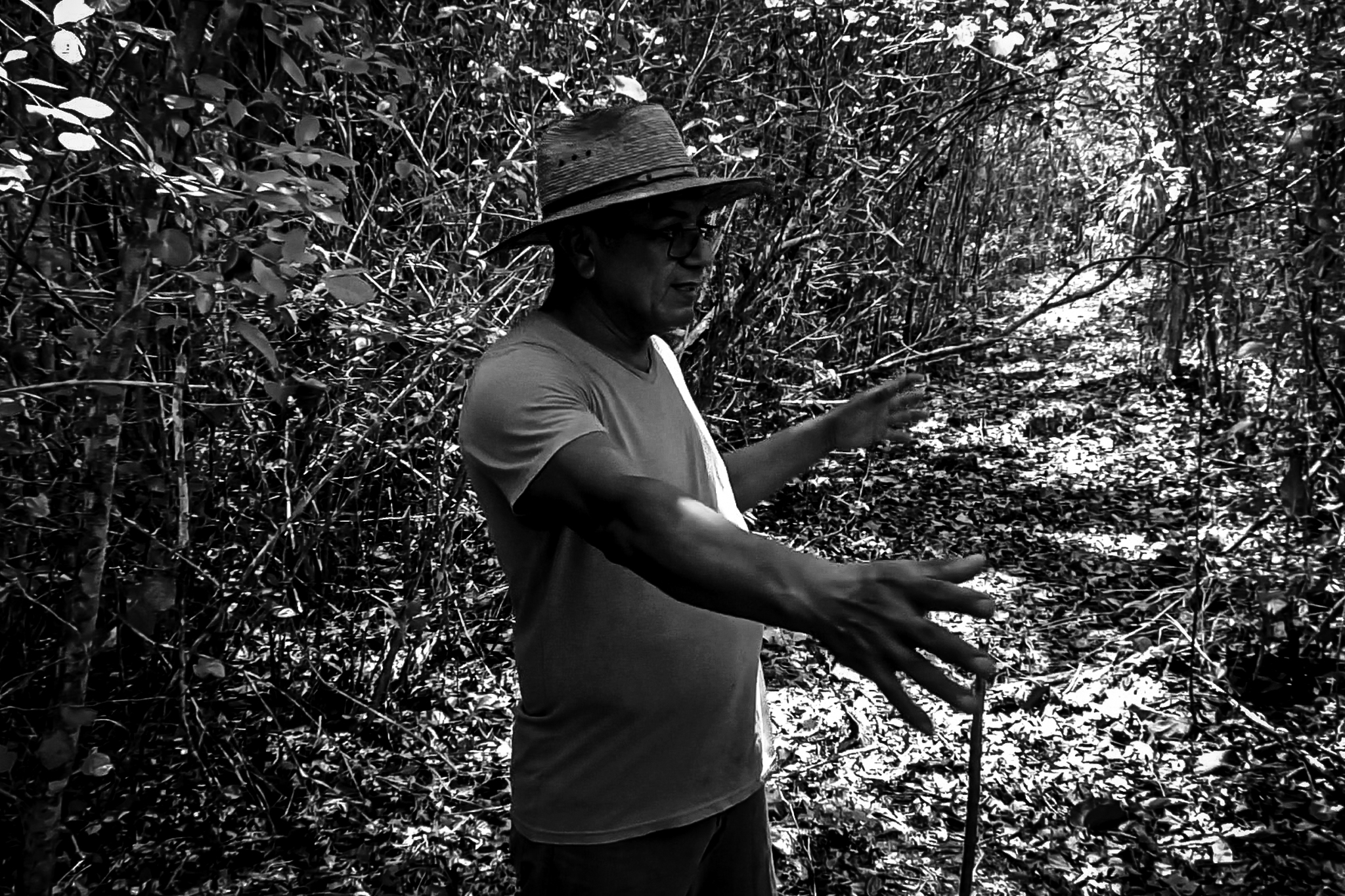In these times, when we see seeds of destruction and death planted around the world, how wonderful to imagine that instead, we could seed life. Life! And sustainable life, not just for today’s survival but for tomorrow and future generations; and not just for humans but for all the plants and animals whose lives are knitted to our own.
Mexico hasn’t shrunk from seemingly impossible tasks. In 2019, it began the Sembrando Vida program, “seeding life.”
The goal is vast — to involve 400,000 people in reforestation on small portions of land, to which they already have rights, to protect and repair ecosystems damaged by years of exploitative practices from agribusiness, tourism, and the rush for short-term profits. Sembrando Vida supports project participants with monthly stipends of about $250 a month; they are taught old and new organic techniques that protect the earth and everything that lives on it. Millions of trees are being planted.
Sembrando Vida is also an economic development project, seeding life for poor farmers, including the 30% who are women. Farmers plant vegetables, fruits and larger trees. Once they are in the rhythm and can eat, sell, and set aside their produce for the future, the project can suspend their stipends and enroll new participants.
While a program so large and ambitious will certainly include mistakes and failures, it has also been the target of unsupported accusations — that the project is a huge boondoggle, a way to buy off some of the rural population, even that Sembrando Vida actually caused the loss of 73,000 hectares (180,387 acres) of forest cover. When you plant, not every seedling survives: Sembrando Vida is growing, one tree at a time, one life at a time.
Recently, Mayan Train (Tren Maya) researcher Étienne von Bertrab brought three of us from the Mexico Solidarity Bulletin to investigate the environmental, social, and economic impacts of Tren Maya’s construction. While not directly related to the train, Sembrando Vida participants along its route contribute to mitigating any forest damage caused by construction. We spent a morning with Victor Poot, a participant in the program for several years, and we bring you his thoughts.
Can seeding life crowd out the weeds of violence and death? With the alternative of sustainable farming, we can hope that the drug cartels will not have desperate people to recruit. Whatever the hiccups, what could be more important than a program that aims to bring new life to the land and its inhabitants?
Victor Poot is a Mayan farmer in the rural area between the village of Felipe Castillo Puerto and the Tren Maya station being built in Quintana Roo; people of Mayan descent make up the largest proportion of the population. We got to visit his farm and to hear his experience with Sembrando Vida firsthand.
Your land used to be part of an ejido, but now you own it yourself, and part of it is now enrolled in the Sembrando Vida program, right?
I love this land. It was my father’s before me. He was one of the original ejidatarios, groups of people collectively made owners of large tracts of land, an ancient form of property management from Mayan times. In 1992, after ejidos were allowed to sell parts of their land to individuals (a provision of the NAFTA trade agreement, ed.), I decided to start the process of buying my land. That was thirty years ago! It’s taken me that long to get the title. I have 100 hectares (247 acres), which I farm on my own. I’m still also an ejidatario, and we govern the entire ejido.
I liked the goals of Sembrando Vida. I’m of Mayan descent. I’m in favor of reforestation and preservation of our native plants and animals, and it helps to get a small stipend every month because farmers can’t count on a steady income.

Even without the project, I’ve been raising all kinds of animals — varieties of chickens, turkeys, peccaries (a kind of wild pig) that run free inside a large fenced area, and a little native animal that is a kind of capybara that sleeps underground by day. All these animals can be used for food. I also planted many different kinds of trees.
What are the requirements of the program?
Sembrando Vida identified two and a half hectares (about 6 acres) for use. They required three kinds of planting: the first is milpa, the traditional way of raising corn, which is to plant it together with beans and squash; this method doesn’t deplete the soil. The second is to grow fruit trees.
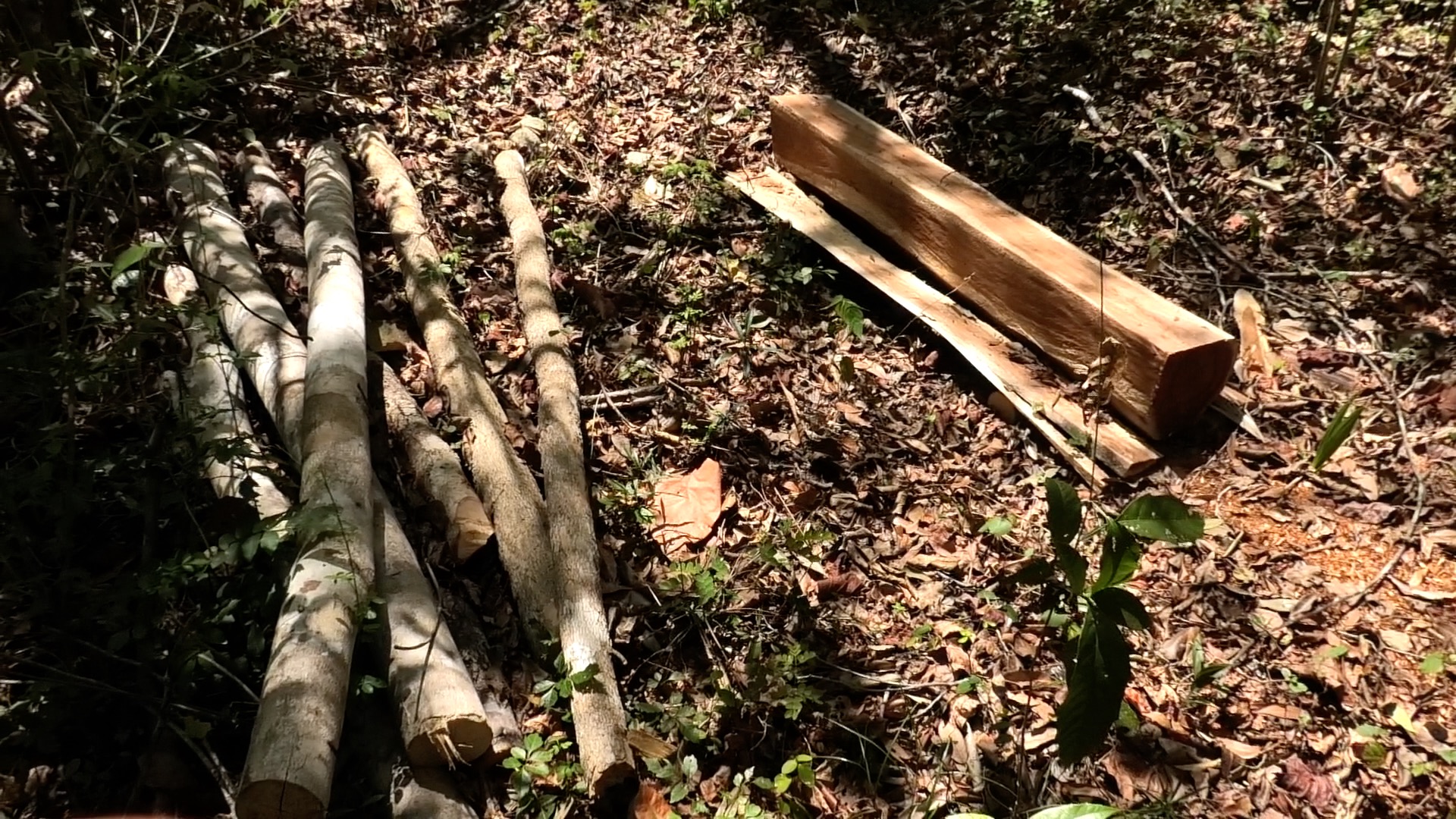
The third is to plant trees as raw material for wood products. These three kinds of planting provide food to eat today, products to sell, and trees for lumber in the future.
However, my soil is not good for milpa, it has too much limestone. It also wasn’t good for fruit trees — it’s too rocky and doesn’t have enough water. I do grow trees for wood, these are long-term. It will take 20 years for the cedar trees and 50 for the mahogany to be ready for harvest.
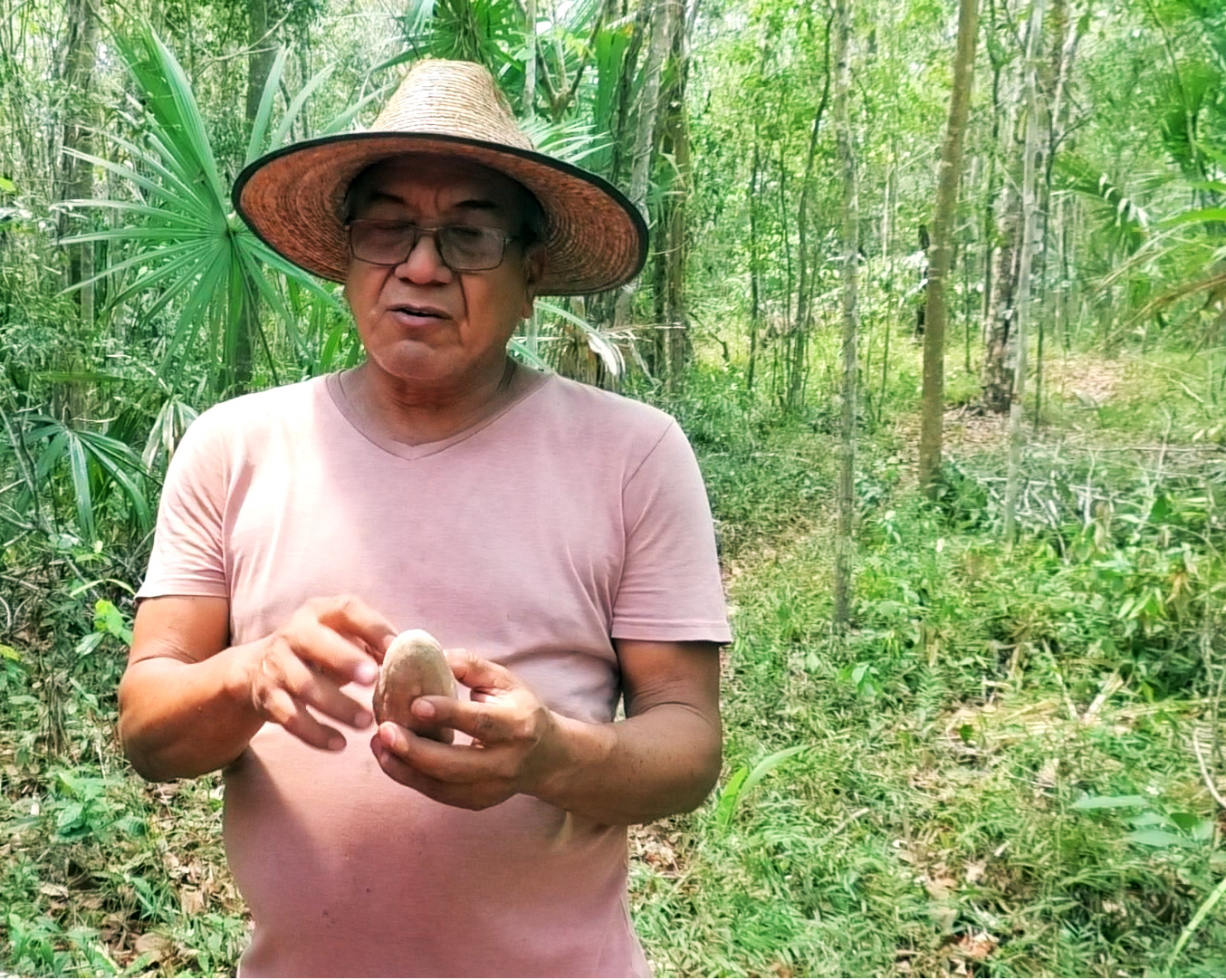
However, the program is flexible. It allowed me to substitute some fruit trees that I’d planted on parts of my land not included in Sembrando Vida land. It’s also possible to have some land dedicated to Sembrando Vida in one section of your property and more in another section to piece together into two and a half hectares.
Twenty-four farmers are involved in Sembrando Vida projects nearby, and we have land in common. On the common land, we have our biofabrica (where we make compost) and share a plant nursery. When Sembrando Vida staff come to visit, they help us solve problems and teach us how to improve our methods, particularly for organic farming. To be organic is a requirement; to protect the soil and plants, we don’t use chemical fertilizers or pesticides. While we use organic methods, we aren’t required to be certified. International certification is just too difficult.
How many people work with you?
I do most of the work by myself! I do sometimes have help from my sons and my brother, but I’m the only one living here. My wife and the rest of my family live in the village, Felipe Castillo Puerto. Farming is hard; you have to love it! For those who say we Mayans are lazy, let them come and see how we work!
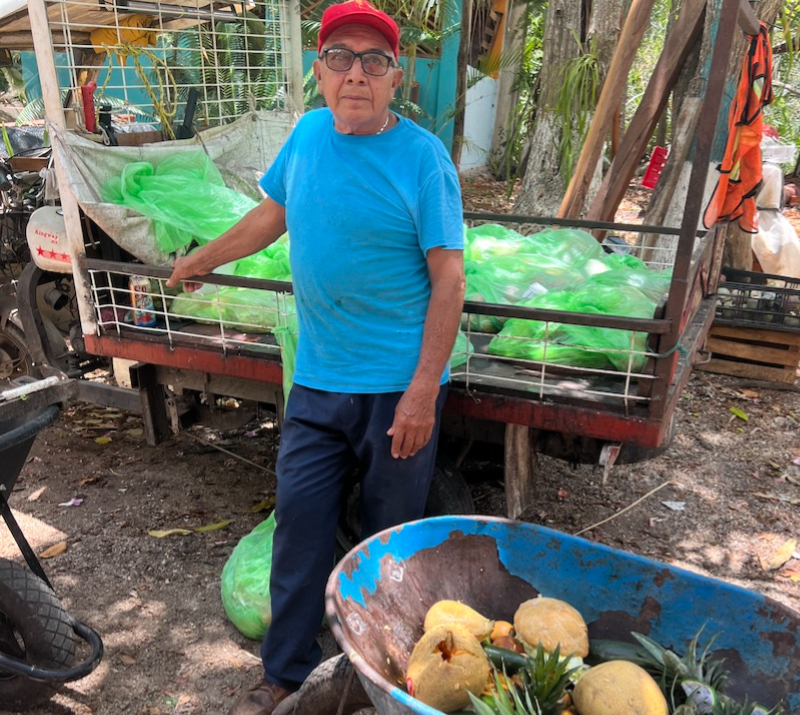
The Tren Maya passes close to here, and there will be a stop near Felipe Castillo Puerto. What has the effect of the train been?
Well, for one thing, I can’t find any agricultural workers to hire. Everyone is working for the train! It has all kinds of jobs that pay well. Besides work directly related to the train, people in the village are renting out rooms even in their small houses for the workers who are here temporarily to build the train and the station, and, of course, all those workers need to eat. Small restaurants or street vendors have business. The train has raised the standard of living in poor villages like ours; Felipe Carillo Puerto was really struggling before.
What will happen once the building boom is over? It won’t go back to the way it was before. With the train bringing people in, I think we’ll see more jobs, but not at the same level as right now — we’ll see.
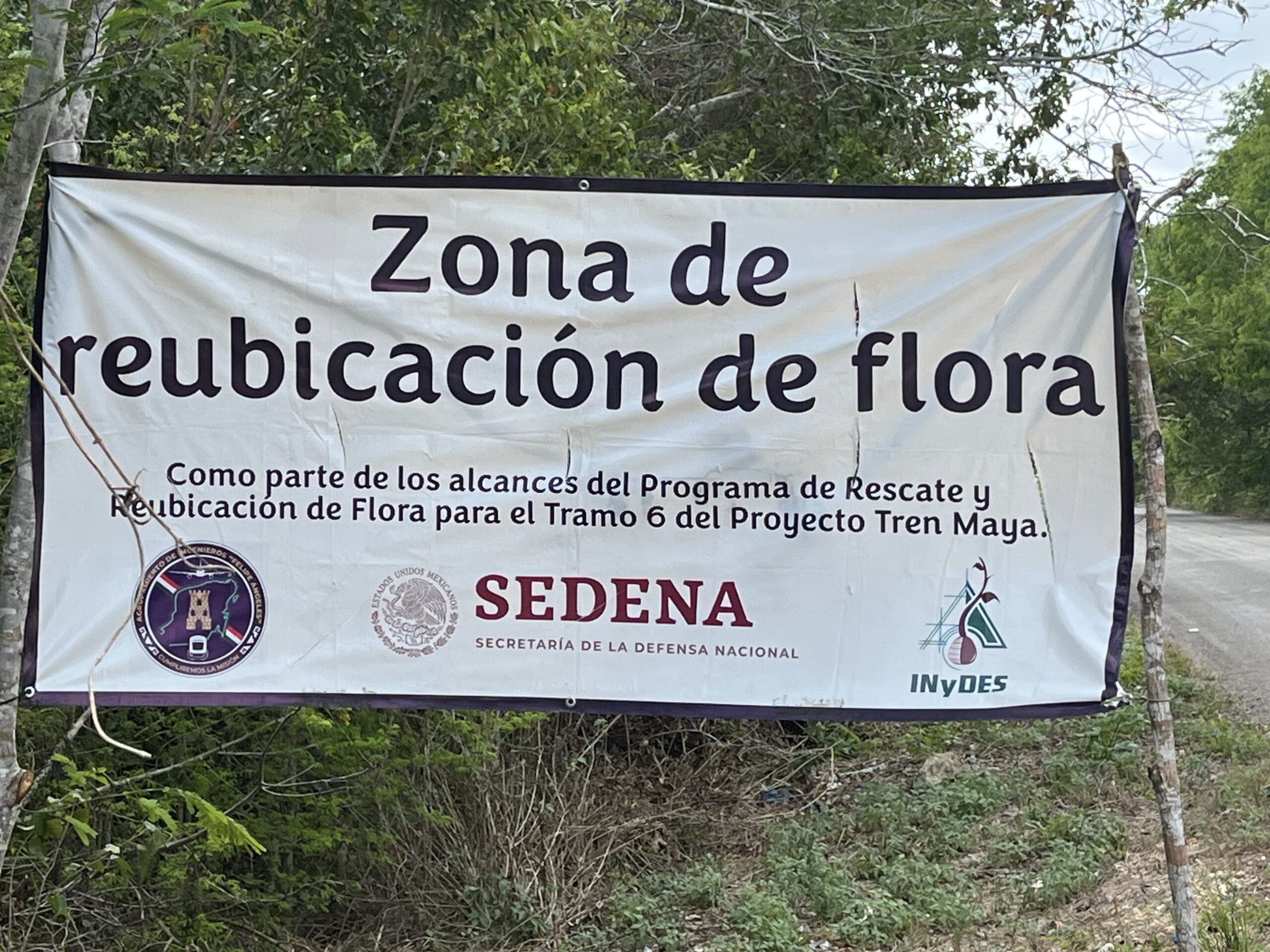
What do you see as the biggest threats to preserving the natural environment here? Is the train causing permanent damage?
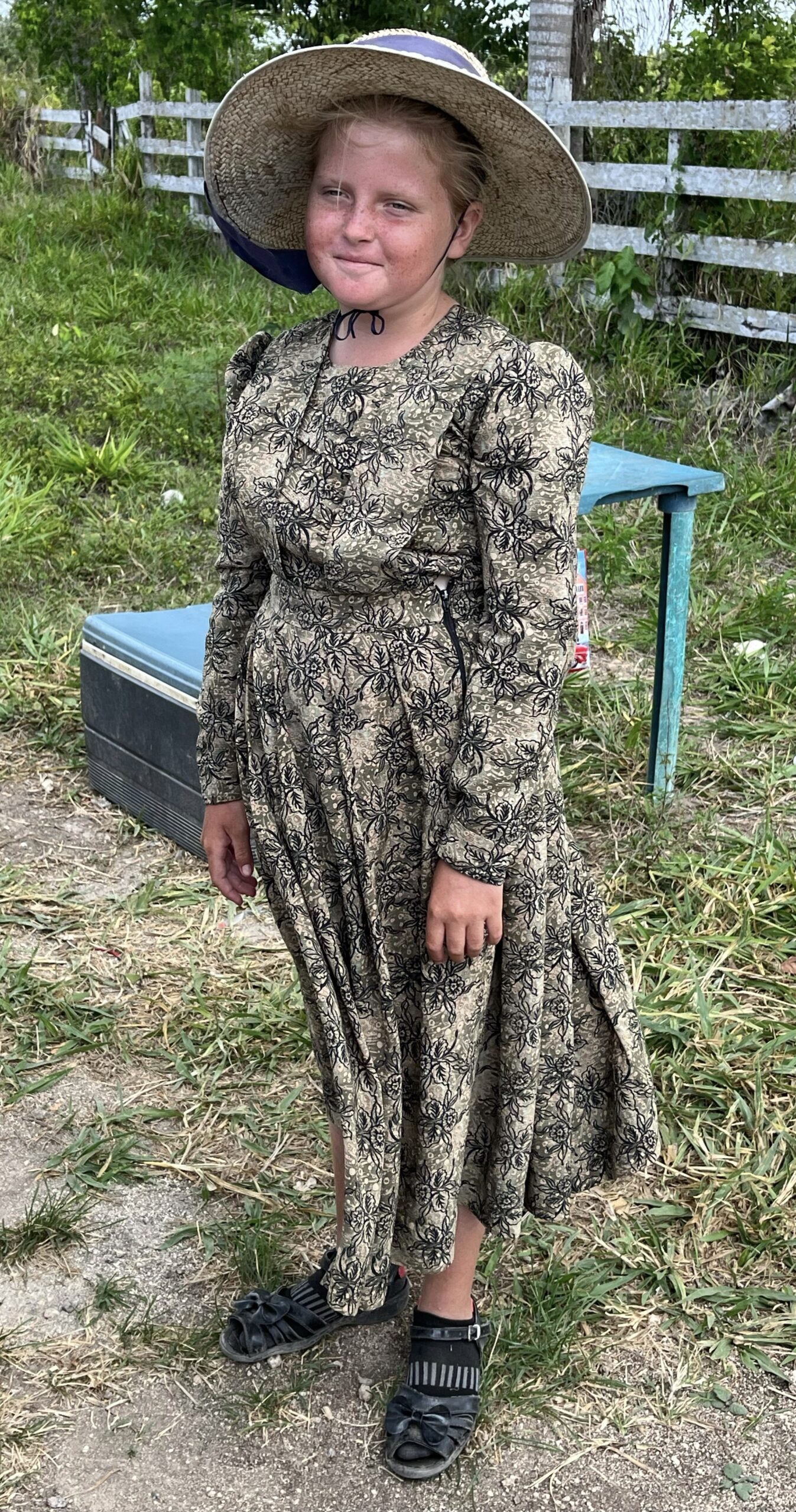
Through the program I’m in and other reforestation and conservation projects in this area, the government is doing a lot to protect and restore our natural environment. The biggest threat is agribusiness.
We have a growing population of Mennonites. Because of the law allowing ejidos to sell land to private groups, they’ve been able to buy parcels of land and piece them together into huge farms. More and more Mennonites are coming, acquiring more land and creating agribusinesses. They stay in their own communities and don’t interact with others; they don’t even speak Spanish!
They’re cutting down a lot of forest in clearing the land; they use big machinery and don’t use organic farming methods or pay attention to the soil’s health. I’m worried. As they get more and more land from ejidos, they could come to have a majority and turn ejidos into agribusinesses — the opposite of what we Mayans want.
What do you think of Morena, the President’s party?
Our local mayor, who ran on the Morena ticket, is corrupt. He’s a chapulin, or grasshopper, someone who jumps from one party to another just to get elected. But I like what AMLO has done; we need the kind of programs that AMLO started — such as Sembrando Vida — that are helping us in these rural areas. I’m voting for Claudia!

